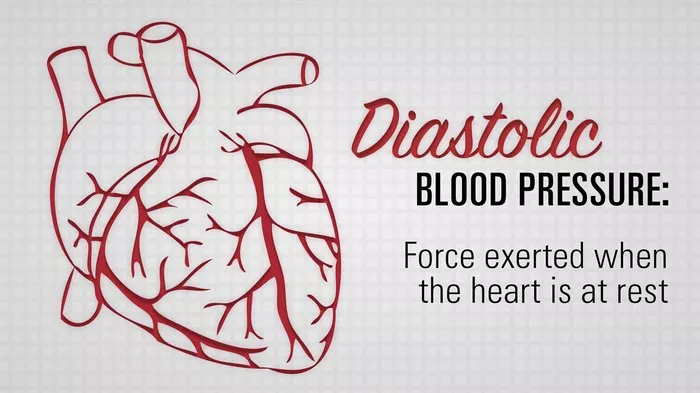lood pressure is a vital indicator of cardiovascular health, typically measured as two numbers: systolic and diastolic. While much attention is often given to the systolic blood pressure, the diastolic blood pressure, represented by the bottom number in a blood pressure reading, is equally crucial. Understanding what the bottom blood pressure number means is essential for comprehensively assessing one’s cardiovascular health and managing conditions such as hypertension. This article aims to delve deeply into the significance of diastolic blood pressure, its measurement, factors influencing it, associated health risks, and strategies for maintaining optimal levels.
What is Diastolic Blood Pressure?
Diastolic blood pressure represents the pressure in the arteries when the heart is at rest between beats, specifically during the diastolic phase of the cardiac cycle. It is the minimum pressure exerted on the arterial walls, reflecting the peripheral vascular resistance, or the resistance encountered by blood as it flows through the arteries. Typically, diastolic blood pressure is measured when the heart relaxes and refills with blood between contractions.
Understanding Blood Pressure Readings
Blood pressure readings consist of two numbers, expressed in millimeters of mercury (mm Hg). The top number, systolic blood pressure, represents the pressure in the arteries when the heart contracts and pumps blood into the circulation. The bottom number, diastolic blood pressure, reflects the pressure in the arteries when the heart is at rest and refilling with blood between contractions.
For instance, in a blood pressure reading of “120/80 mm Hg,” 120 denotes the systolic blood pressure, while 80 represents the diastolic blood pressure. Both numbers are crucial indicators of cardiovascular health, with elevated readings potentially signaling underlying health issues.
Interpreting Diastolic Blood Pressure Readings
Diastolic blood pressure readings are interpreted as follows:
- Normal: Less than 80 mm Hg
- Elevated: 80-89 mm Hg
- Stage 1 hypertension: 90-99 mm Hg
- Stage 2 hypertension: 100 mm Hg or higher
Elevated diastolic blood pressure can indicate increased vascular resistance, stiff arteries, or other underlying health conditions, necessitating further evaluation and management.
Factors Influencing Diastolic Blood Pressure
Several factors influence diastolic blood pressure, including:
1. Peripheral Vascular Resistance: Increased resistance to blood flow in the peripheral arteries can elevate diastolic blood pressure.
2. Heart Rate: Lower heart rates during diastole allow for more complete filling of the heart chambers, affecting diastolic blood pressure.
3. Blood Volume: Higher blood volume can increase pressure on arterial walls during diastole.
3. Arterial Stiffness: Stiffened arteries offer greater resistance to blood flow, leading to elevated diastolic blood pressure.
5. Hormonal Influence: Hormones such as adrenaline and aldosterone can affect vascular tone and blood volume, influencing diastolic blood pressure.
6. Medications: Certain medications, including beta-blockers, can lower diastolic blood pressure by reducing heart rate and cardiac output.
Understanding these factors is crucial for assessing diastolic blood pressure variations and devising appropriate management strategies.
Health Risks Associated with Abnormal Diastolic Blood Pressure
Abnormal diastolic blood pressure levels, whether too high or too low, can pose significant health risks:
1. Hypertension: Consistently elevated diastolic blood pressure is a hallmark of hypertension, a major risk factor for cardiovascular disease, stroke, and kidney disease.
2. Hypotension: Extremely low diastolic blood pressure can lead to inadequate blood flow to vital organs, resulting in dizziness, fainting, or organ damage.
3. End-Organ Damage: Prolonged hypertension can damage the heart, kidneys, brain, and blood vessels, increasing the risk of heart attack, stroke, and kidney failure.
4. Cardiovascular Events: Elevated diastolic blood pressure significantly increases the risk of heart attack, stroke, and other cardiovascular events.
Timely recognition and management of abnormal diastolic blood pressure are essential for mitigating these risks and preserving cardiovascular health.
Strategies for Managing Diastolic Blood Pressure
Managing diastolic blood pressure involves lifestyle modifications, medication, and regular monitoring. Effective strategies include:
1. Healthy Diet: Adopting a diet rich in fruits, vegetables, whole grains, and lean proteins can help lower blood pressure.
2. Regular Exercise: Engaging in regular physical activity can improve cardiovascular health and lower diastolic blood pressure.
3. Weight Management: Maintaining a healthy weight through diet and exercise can reduce blood pressure levels.
4. Stress Management: Practicing stress-reduction techniques such as meditation, deep breathing, and yoga can help lower blood pressure.
5. Medication: When lifestyle modifications alone are insufficient, medications such as diuretics, ACE inhibitors, beta-blockers, and calcium channel blockers may be prescribed to lower blood pressure.
Individualized treatment plans tailored to each patient’s needs are essential for effectively managing diastolic blood pressure and reducing cardiovascular risk.
Conclusion
Diastolic blood pressure, represented by the bottom number in a blood pressure reading, is a critical indicator of cardiovascular health. Understanding its significance, interpretation, and associated health risks is essential for comprehensive cardiovascular assessment and risk management. By implementing lifestyle modifications, medication, and regular monitoring, individuals can effectively manage diastolic blood pressure and reduce the risk of cardiovascular events. Empowering patients with knowledge about diastolic blood pressure empowers them to take proactive steps towards better cardiovascular health and overall well-being.


